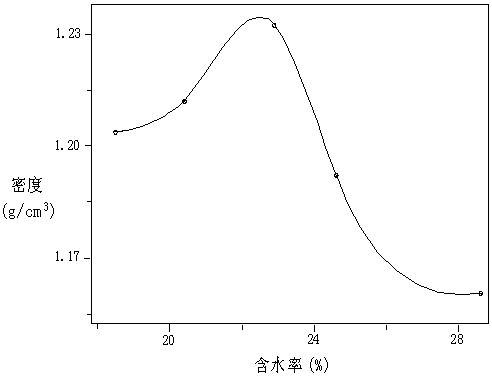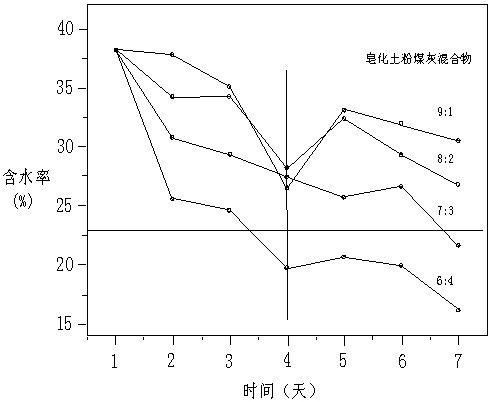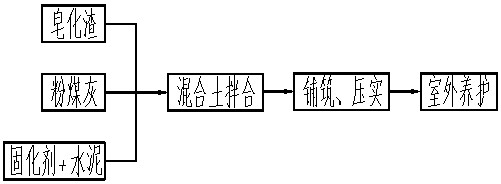Application of epoxypropane saponification waste residues in curing of base layer paving material
A technology of propylene oxide and paving materials, applied in construction, solid waste management, sustainable waste treatment, etc., can solve problems such as strength loss, water damage, etc., and achieve the effect of eliminating hidden dangers of safety and environmental secondary pollution
- Summary
- Abstract
- Description
- Claims
- Application Information
AI Technical Summary
Problems solved by technology
Method used
Image
Examples
Embodiment Construction
[0013] The following will clearly and completely describe the technical solutions in the embodiments of the present invention with reference to the accompanying drawings in the embodiments of the present invention. Obviously, the described embodiments are only some, not all, embodiments of the present invention. Based on the embodiments of the present invention, all other embodiments obtained by persons of ordinary skill in the art without making creative efforts belong to the protection scope of the present invention.
[0014] As shown in the figure, the application of propylene oxide saponification waste slag solidification in base paving materials, according to the soil characteristics of propylene oxide saponification waste slag, the resource treatment of saponification slag is selected and mixed with a curing agent to obtain a base pavement Materials, first, dry the saponified slag at 105-110°C, add fly ash to the saponified slag and mix briefly, the weight ratio of saponi...
PUM
| Property | Measurement | Unit |
|---|---|---|
| density | aaaaa | aaaaa |
Abstract
Description
Claims
Application Information
 Login to View More
Login to View More - R&D
- Intellectual Property
- Life Sciences
- Materials
- Tech Scout
- Unparalleled Data Quality
- Higher Quality Content
- 60% Fewer Hallucinations
Browse by: Latest US Patents, China's latest patents, Technical Efficacy Thesaurus, Application Domain, Technology Topic, Popular Technical Reports.
© 2025 PatSnap. All rights reserved.Legal|Privacy policy|Modern Slavery Act Transparency Statement|Sitemap|About US| Contact US: help@patsnap.com



